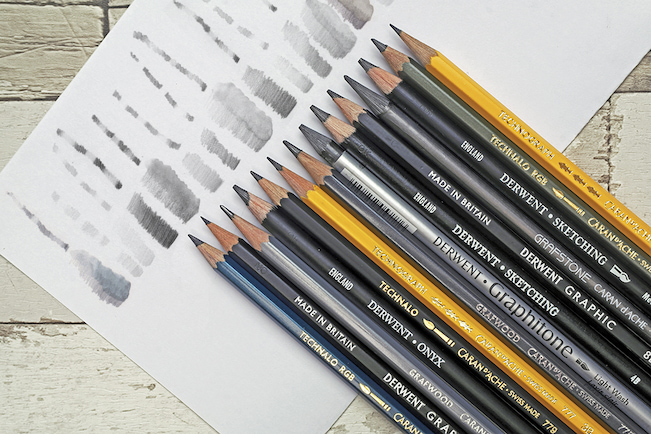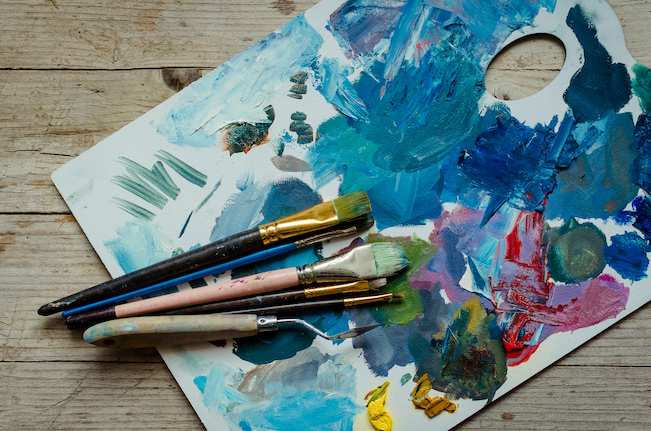Few things in life are as satisfying and creatively stimulating as art. This age-old craft has an unprecedented capacity to bring people together through visual stimulation and delightful expression. The more you put into it, the more you get from it – with numerous ways to show your own personal style.
For those who are just starting out in the world of art, you can find an abundance of resources available to help guide you on your journey. Naturally, having innate talent is only half the battle, but having the right tools to express your creativity is what truly separates the masters from the learners.
What Do Beginner Artists Need?
It doesn’t matter if you’re into abstract art that warms the heart or more traditional art forms – there are certain supplies you’ll need to get going. Most of the basics are relatively straightforward, with their own set of intricacies as you get more into the craft.
Art Pencils
Essentially serving as the foundation of your artistic pursuits, browsing through art pencils online will get you to a plethora of options to choose from. From sketching pencils for delicate linework, water-soluble graphite models for smooth shading, and even mechanical ones for straight lines – there’s an abundance of options to explore.

In most cases, the deciding factor when looking through art pencils is the hardness of the lead. Soft ones provide smoother and darker lines, while harder variants are great for finer details. The range of available grades is usually marked on the pencils, where H stands for hard and B for black.
H models are much more suitable for detailed artwork, while B pencils are the preferred tool of many abstract artists. If you want something in between, then G pencils are the most common type, offering a good balance between detail and shading. Their inherent versatility and unmatched utility offer a great way to kick-start your art journey.
Additionally, the overall quality of the pencil is also a vital aspect – the more expensive ones are almost always better. Quality art pencils online made out of premium cedarwood provide a smoother and more pleasant feel, with little to no smudging. The somewhat more affordable varieties are made of basswood, which is also a good option – with slight differences in their overall feel.
As someone who is just starting out, you likely won’t notice much of a difference between the two materials. But as you progress, you’ll appreciate the value of premium cedarwood pencils more and more – especially when it comes to details and shading.
Charcoals and Inks
Moving on to something a bit more advanced – charcoals and inks can be a splendid way to add an extra layer of depth to your artwork. Charcoal sticks are great for capturing well-defined details, with easy smudging and blending to create some truly unique pieces. Their soft texture enables you to quickly and easily cover large portions of any canvas.
On the other hand, ink pens are generally used for more precise details, with a much finer range of grades and thicknesses. From calligraphy nibs for elegant writing to even felt tip markers for broader strokes – they offer a solid foundation for those who are into intricate line work.
Paint Sets
Of course, what kind of artist would you be without a good set of paints? From acrylics to watercolours and everything in between, you’ll rely heavily on their vibrant colours and intricate blends of hues to truly bring your ideas to life. That said, the type of paint set you’ll need depends heavily on the type of artwork you plan to create.
If you’re into abstract art, then acrylic paints may be a more viable option. Their fast-drying nature makes them easy to use for large projects, and the thick texture ensures that your artwork will last much longer than some other alternatives.
On the flip side, watercolours have a more delicate feel to them, providing a softer look and feel to the painting. Their thin consistency allows for easy blending and layering – often creating a really unique and impressive look. Moreover, watercolours are relatively mess-free and easy to clean up – so even beginners can get the hang of them quickly.
Mixing Palettes and Brushes
None of these paints can be put to good use without some high-quality mixing palettes and brushes. The type of palette you opt for will depend greatly on your preferred painting technique, although most artists will agree that a plastic or porcelain one can get the job done.

As for brushes, there’s a whole range of options available, from soft sponges for blending to stiff-bristled brushes for more precise details. It’s best to start with a good all-purpose brush set that includes a few different shapes and sizes. Once you get the hang of it, you can add more types as your skills improve.
Sketchpads and Canvases
Of course, turning your ideas into reality requires a good canvas to work on. In most cases, a standard sketchpad or artist’s journal will do just fine. They have an assortment of sizes and materials to choose from, with some of the more popular options being paper, canvas, and even wood and metal.
Alternatively, if you’re more into traditional artwork, then you may want to purchase a proper canvas. These have a stretched fabric or linen surface, which provides a good base for painting with oils and acrylics. Some models even come pre-stretched with wooden frames, making them ideal if you plan on exhibiting your artwork in your home at some point.


























